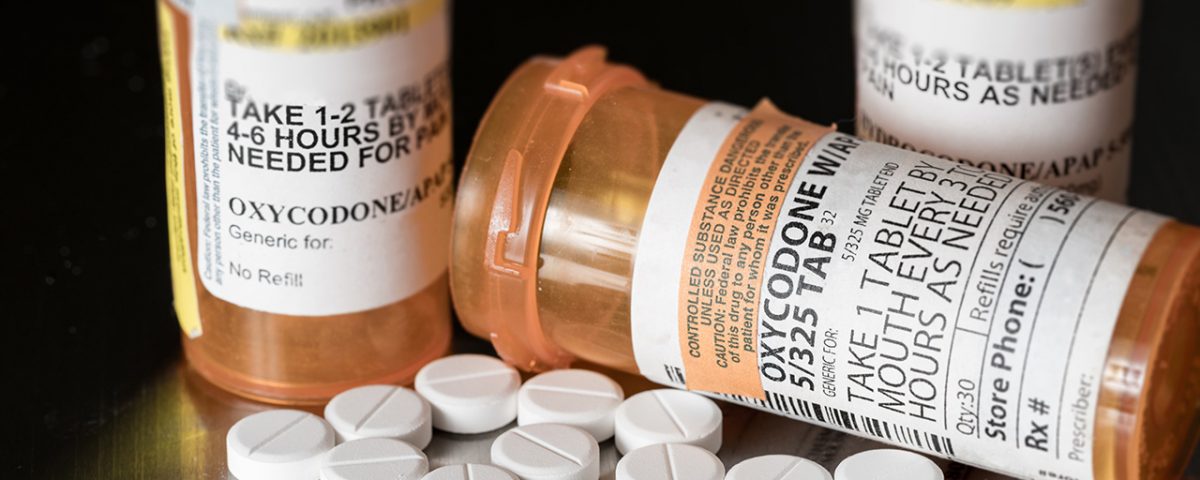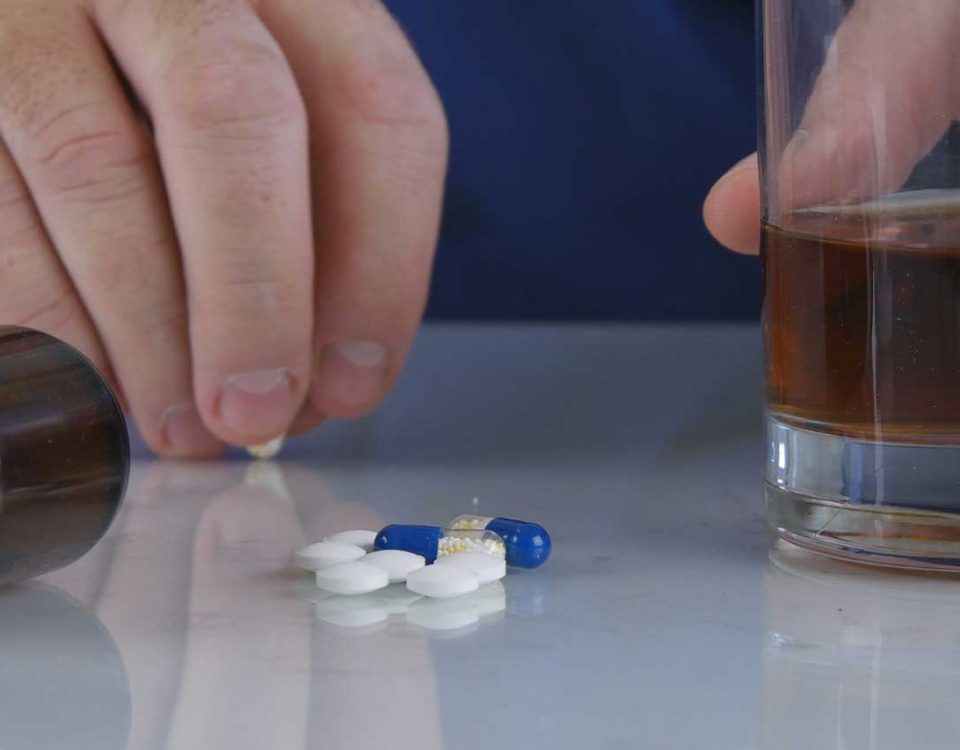Opioid abuse has dominated new headlines as the opioid epidemic continues to affect the lives of millions in the United States.
In 2019 alone, an estimated 10.1 million people aged 12 or older misused opioids. Specifically, 9.7 million of these people misused prescription pain relievers, and 745,000 used heroin.1 Additionally, opioid abuse in the U.S. has become so severe that more than 130 people die from opioid-related drug overdose every day.2 As a drug rehab in Naperville, we understand how important addiction education is for preventing substance abuse. While a doctor can prescribe the drugs mentioned below, users should take certain precautions when taking them. We’re sharing a list of opioids, strongest to weakest, to put the dangers of opioid abuse into perspective.
How Do Opioids Work?
Opioids are highly addictive central nervous system stimulants that include both illicit and prescription drugs. However, whether they’re illegal drugs (heroin) or prescription medications (oxycodone), all opioids work by binding to and activating opioid receptors on cells located in the brain, spinal cord, and other organs of the body. This process especially involves opioid receptors on areas of the body associated with mood and pleasure. When a person takes a higher dose of opioids than recommended or prescribed, they may experience strong sensations of pleasure and euphoria that can reinforce the act of drug use. These sensations will cause the user to repeat this behavior, eventually leading to physical dependence and addiction. The effects of opioids on the brain are so severe that most individuals who become addicted to them require the help of opioid rehab to recover their sobriety.
What Is the Strongest Opioid Drug?
The strongest pain medication is an opioid, and the strongest opioid is carfentanil because it’s 10,000 times more potent than morphine and 100 times more potent than fentanyl.
Prescription opioids are controlled substances because they have a high potential for abuse and addiction. Chronic use eventually leads to developed physical tolerance, meaning that you’d have to increase the dose to experience the same high or relief. Opioid addiction isn’t limited to people who use heroin but can also occur among those who take prescription opioids like hydrocodone, oxycodone, oxymorphone, codeine, and morphine. Moreover, all opioids, while addictive, are different.
Opioid List: Strongest to Weakest
When prescription opioids first hit the market as pain killers, they were advertised and sold as safe and powerful medications. Today, the effects of opioids and their potential for addiction are better understood. These dangers are most evident in the current opioid epidemic, which has affected the lives of millions. Several opioids are driving this drug crisis. Below is a list of opioids, strongest to weakest, that offers a guide on the most dangerous opioids to the least dangerous. However, keep in mind that while some are stronger, all opioids are addictive.
Carfentanil
Carfentanil is a synthetic opioid that’s more potent than morphine, fentanyl, and heroin. It’s most often used to tranquilize large animals, like elephants. As the opioid epidemic worsens, synthetic opioids like carfentanil have emerged in more communities, often disguised as heroin. However, as previously mentioned, carfentanil is 100 times more potent than fentanyl, which can be lethal at 2 milligrams (mg). Carfentanil looks like a white powder that is similar in appearance to heroin and cocaine. Drug dealers often mix carfentanil and heroin to make the drug stronger and to make the product weigh more, allowing them to make a larger profit. Not only are street drugs like heroin dangerous in their purest form, but adding carfentanil to the mix only increases the risk of addiction, overdose, and death.
Sufentanil (Dsuvia)
If you’ve never heard of sufentanil, then you’re not alone. This drug is less spoken of when it comes to opioids, but it’s still dangerous. Also known as Dsuvia, sufentanil is an opioid analgesic that’s used as an anesthetic. Dsuvia, the sublingual form of sufentanil or the form that’s administered under the tongue, is used to manage acute pain in adults. The sublingual form of sufentanil was manufactured by AcelRx Pharmaceuticals, Inc. (AcelRx) and was approved on November 2, 2018. Dsuvia contains sufentanil, which is five to 10 times stronger than fentanyl and 1,000 times more potent than morphine.
Fentanyl
Fentanyl is another synthetic opioid that’s up to 50 times more potent than heroin and 50 to 200 times more potent than morphine. It’s a prescription drug that’s used to treat severe pain after injury or surgery. It’s also sometimes used to treat chronic pain and those who are physically tolerant to other opiates. Due to its high potency and strength, fentanyl has become one of the leading drugs in the opioid epidemic. In addition to using this drug alone, it’s also a common cutting agent in heroin and cocaine to increase their effects. Those who find themselves dependent on fentanyl may require the help of a partial hospitalization program to physically and mentally recover.
Alfentanil
Alfentanil is another synthetic and short-acting opioid with analgesic and local anesthetic abilities. It works by binding to the mu-opioid receptor, specifically one called a G-protein-coupled receptor, mimicking the actions of morphine.3 When taken in high doses, alfentanil can produce sedation. Alfentanil can also affect levels of neurotransmitters like dopamine and noradrenaline. Like other substances in its drug class, alfentanil is highly addictive and dangerous.
Heroin
Unlike the other drugs we’ve listed so far, heroin is an illicit opioid made from morphine, which is initially taken from the seed pods of opium poppy plants. Heroin is a white powder that often contains additives or cutting agents (including carfentanil and fentanyl), making it difficult to identify its potency. When heroin contains cutting agents, its side effects are unpredictable, and the potential for overdose increases because it’s difficult to know the potency of certain doses. Heroin can be injected, snorted, or smoked and is often mixed with cocaine in a practice known as speedballing.
Hydromorphone (Dilaudid)
Dilaudid or hydromorphone is a medication used to treat severe pain. Since it’s significantly stronger than morphine, it can produce intense sensations of relaxation and sedation. Hydromorphone can be dissolved and injected, acting similarly to heroin. Consequently, many people who suffer from heroin addictions may also turn to Dilaudid as a substitute.
Oxymorphone (Opana)
Oxymorphone is an opioid that’s sold under the brand name Opana. Like most other opioids, it’s used to treat moderate to severe pain. It’s also used to help anesthesia work better during surgery and ease the anxiety associated with heart-related breathing problems. Like other opioids, Opana can cause respiratory depression or distress, which refers to shallow or ineffective breathing, which occurs most often when the drug is taken in high doses.
Methadone
Methadone is a synthetic opioid analgesic that’s used both to treat pain and opioid addiction. It’s similar to morphine in side effects but is longer acting, making it an effective substitute drug in morphine and heroin addiction treatment. Other brand names for methadone include Diskets, Methadone Intensol, Methadose, and Dolophine. Methadone should only be taken as prescribed and under medical supervision. If abused or misused, it can produce similar side effects to morphine and can even lead to addiction.
Oxycodone (Oxycontin, Roxicodone, Percocet)
Oxycodone is another opioid that’s used to treat moderate to severe pain. Oxycodone, being one of the most well-known opioid medications, is also known for its potential for addiction and dangerous side effects like respiratory depression. Like other opiates, taking high doses of oxycodone can lead to overdose, and the most life-threatening symptom of an opioid overdose is respiratory depression. If you’ve been prescribed this medication, take it only as directed by your doctor, and don’t share it with anyone.
Morphine
Morphine is a natural opioid from which other opioids like heroin are derived. It’s extracted from seeds of opium poppy plants, which are native to South America. As a narcotic or opioids, morphine can treat pain as well as produce addiction. Like heroin or oxycodone, chronic use of morphine can result in addiction, and taking high doses can lead to overdose.
Hydrocodone (Vicodin, Lortab, Zohydro ER)
Sold under the brand name Zohydro ER, hydrocodone is an opioid that comes in the form of extended-release capsules or tablets. Many people abuse hydrocodone by crushing or chewing the tablets, which is dangerous because you can ingest too much of the drug all at once, increasing your risk of overdose. Hydrocodone is also highly addictive, so misusing it in any way can also result in dependence.
Codeine
Codeine is an opioid that’s commonly found in prescription cough syrup. It can be prescribed to treat moderate to severe pain when combined with Tylenol and sold in a tablet form under the name Tylenol with Codeine #3 or Tylenol-3. However, codeine is also one of the main ingredients of an addictive liquid substance called “purple drank” or “lean.” Purple drank is a mixture of codeine and promethazine cough syrup. It’s highly addictive and most popular among rap singers who promote its tranquilizing and sedative side effects.
Meperidine (Demerol)
Also known as Demerol, meperidine was the first synthetic opioid to hit the market. However, while it’s weaker than the other drugs on our opiate list, it still has a potential for abuse. Additionally, while it may not be as potent as other opioids, tolerance and physical dependence can develop quicker than some stronger opioids when abused.
Tramadol (Ultram)
Sometimes dispensed under the brand name Ultram, tramadol is similar in potency to meperidine but has a lower risk of tolerance, physical dependence, and abuse. Although tramadol is the weakest opioid, it can still be abused and lead to addiction.
Opioid Rehab in Illinois
Regardless of its potency, you should only ever take prescription opioids as prescribed and directed by your doctor. Otherwise, do not use these drugs. Additionally, most heroin users starting using prescription opioids before moving on to heroin as a cheaper alternative. If you are currently struggling with opioid addiction, Banyan Treatment Centers Chicago can help. We offer opioid treatment and other addiction treatment services that can help you or a loved one get sober. To learn more about our drug therapy programs and other resources at Banyan Chicago, call us at 888-280-4763.
Source:
- HHS - Opioid Crisis Statistics
- HRSA - Opioid Crisis
- NIH - Alfentanil
Related Readings:
Connection Between Heroin and Opioid Pain Pills









